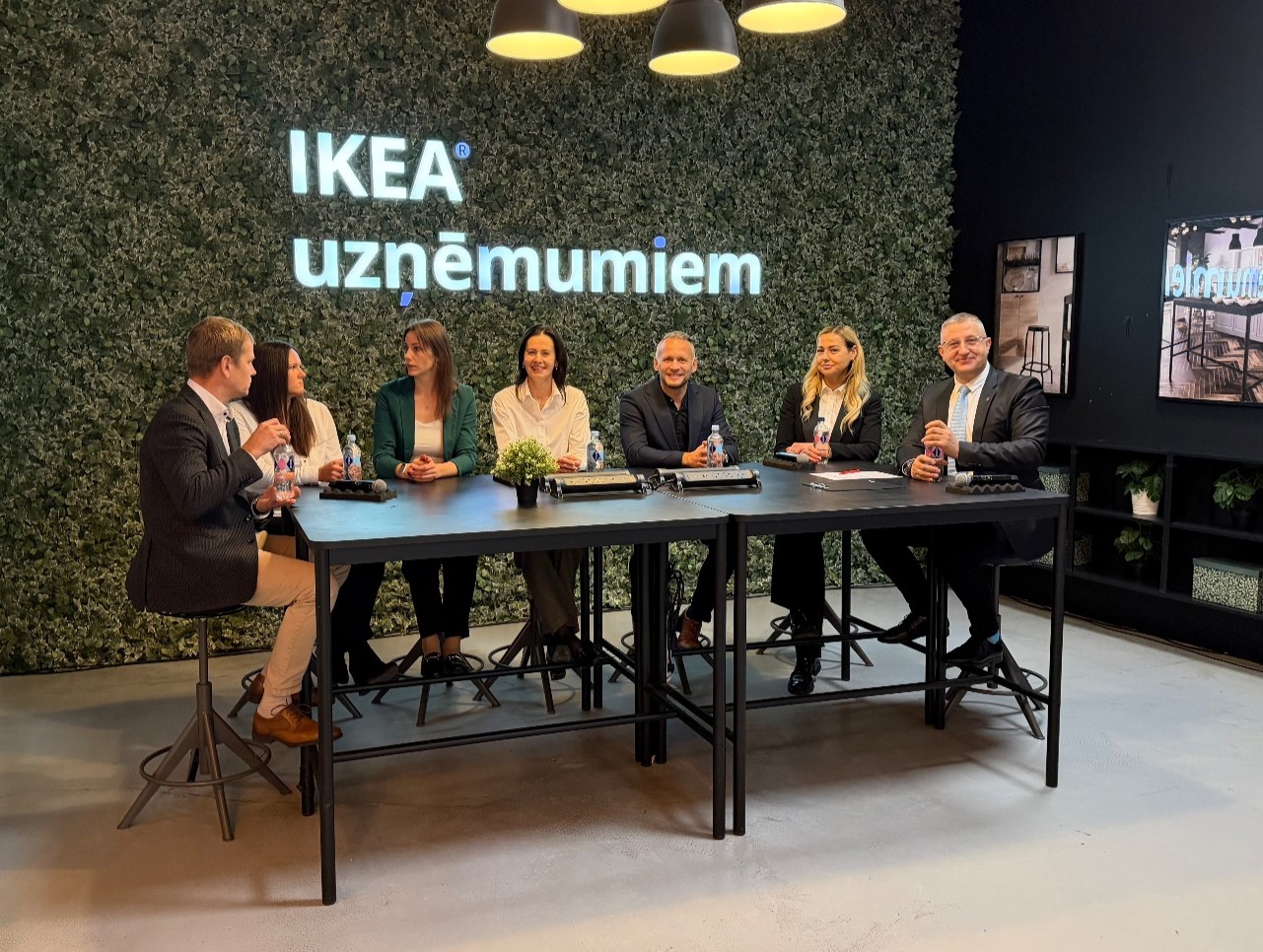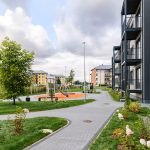
Vestabalt, together with the company’s new projects, is participating in the “Housing Day” exhibition organized by LANĪDA at the SPICE shopping center.
Līga Plaude-Stukovenko, a member of the Vestabalt board, took part in a panel discussion held within the framework of the exhibition on the topic “Living Space 2025 – What kind of housing do Latvian residents choose today?”
The discussion participants talked about how people’s perceptions of housing are changing, which trends dominate the market, and what choices individuals make when planning their living space. Today, developers face a major challenge: being able to balance construction costs with the purchasing power of local residents. As construction costs increase without a proportional rise in buyers’ income levels, developers are forced to continue seeking more economical and efficient apartment layout solutions, which in some cases can no longer guarantee a high-quality and functional living environment for young families in the long term.
Currently, there is a wide supply specifically in the mid-range new project segment (approximately 1,800 units available). However, in recent months, the prices of newly announced projects have already reached €3,000/m², gradually approaching the price level of apartments in Riga’s city center. There is limited supply in the elite luxury housing segment, as well as very few projects offering apartments within the price range of up to €80,000.
During the discussion, Līga Plaude-Stukovenko noted:
“When purchasing a home, it is important to evaluate what the value of the chosen property will be in 10 or 20 years. It is possible that a modern standard economy-class new project, even if it has an A-class energy certificate, may have a lower value after 10 years compared to an apartment in a historic building in Riga’s center or a wooden house in Āgenskalns. Although these homes may never obtain energy certificates, they carry added value due to their historical charm and uniqueness.
In the coming years, shared spaces will become increasingly popular in new projects—for example, shared home offices, gyms, or rooms for storing and sharing tools and equipment, as well as spaces for hosting birthdays or small celebrations. In elite residential buildings, shared-use services may include a guest apartment that co-owners can use when friends from abroad, family, or a nanny visit, so that they do not need to stay in a hotel.
Property quality, energy efficiency, convenience, and comfort for residents—combined with an affordable pricing policy and professional property management that relieves apartment owners of the need to spend their personal time on technical and legal issues at owners’ meetings—are the key values appreciated by today’s buyer.”



In the coming years, the development of the housing market in Latvia will be most strongly influenced by the country’s demographic and economic situation. The home of the future will be energy-efficient, sustainable, and adaptable to different life cycles (modular construction), but to achieve this, financially capable and affluent end buyers are needed. Latvia’s major challenges include economic growth, attracting foreign investment, thoughtful urban planning, developing the housing stock in the regions, and improving the demographic situation.
Latvia’s real estate market is closely linked to global trends, yet the country remains unique due to its demographic and economic challenges. Global expert-highlighted trends—smart homes, sustainable construction, adaptability, and flexibility in housing—also present opportunities for Latvia. However, attention must be paid to local issues such as population decline and emigration. While the home of the future will undoubtedly be technologically advanced and energy-efficient, it must also be accessible and attractive to a broader public, strengthening cities and encouraging residents to return.
Urban development in Latvia over the next four decades may progress in line with global innovations and technological achievements. Below are several recommendations on how Latvia could approach the future to ensure sustainable, technologically advanced, and flexible urban planning:
-
Smart cities and technology integration. By introducing IoT, artificial intelligence, and big data into the urban environment, it is possible to optimise traffic flow, resource usage, and energy consumption.
-
Sustainable solutions and green energy. Using renewable energy sources and implementing passive-house technologies would help reduce CO₂ emissions and energy use.
-
Modular architecture and flexible housing. Buildings that can be adapted to different life stages will become increasingly in demand.
Latvia lacks wealthy and financially capable residents, which also affects the real estate supply.
-
A new type of client is emerging—financially capable buyers aged 65+, who sell their private homes and wish to purchase a smaller apartment in the city centre or a property in the suburbs.
-
Demand will continue to grow from foreigners, arriving students, and employees, while Latvians will increasingly purchase property abroad in the coming years.
A trend toward smaller living spaces will be observed, along with a growing emphasis on shared areas and a sense of community within the property.
An important direction is adaptability to life-cycle changes, or reversible design.
For example, a bedroom can be turned into an office; a larger private house can be converted into a semi-detached house once children have grown up, allowing the second part to be rented out. Accessibility for the elderly is also crucial. Long-term thinking is needed so that properties can be adapted and efficiently used in the future.
Safety — IT solutions, adaptation to climatic conditions, risks caused by wars and crises, availability of bomb shelters, independence from city utility connections, and alternative sources of energy and heat.
Sustainable and energy-efficient architectural solutions and materials will become the norm.
Smaller living areas and thoughtful layouts in line with Smart Home principles.
Mixed-use projects integrating commercial spaces, offices, and residential areas will promote a strong sense of community.
Demand for commercial premises is likely to continue decreasing, while demand for residential housing will rise.
The millennial generation represented approximately 55% of new home buyers in 2024.
The co-living concept offers smaller personal living space but greater emphasis on shared facilities provided by the developer.
Latvia—especially Riga—faces significant challenges related to energy efficiency: an aging stock of old and Soviet-era buildings, insufficient waste-recycling systems, the need for sustainable transport development, and the necessity of shifting to public transport powered by green energy. Equally important is the implementation of intelligent traffic systems to reduce congestion and improve the quality of urban life.


